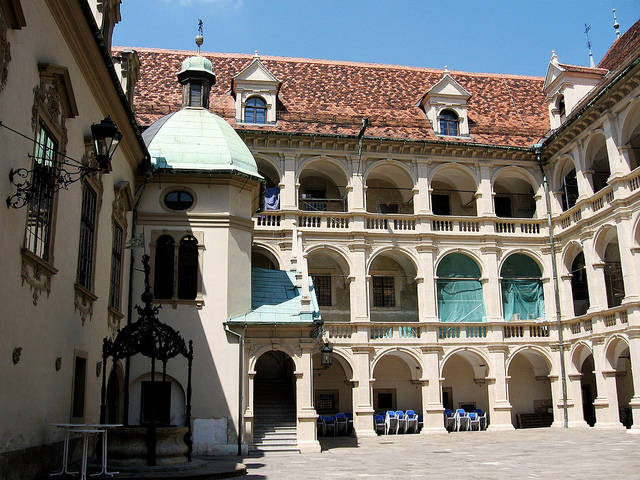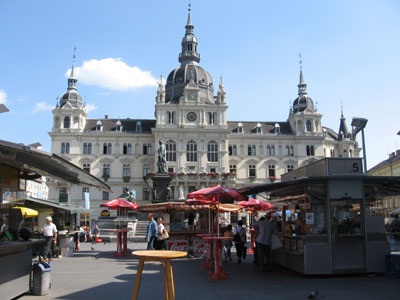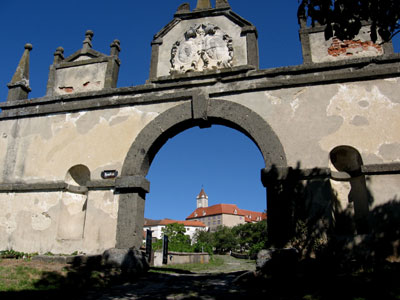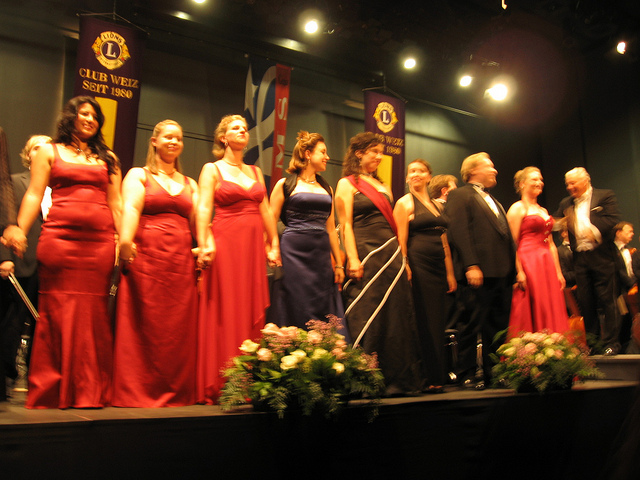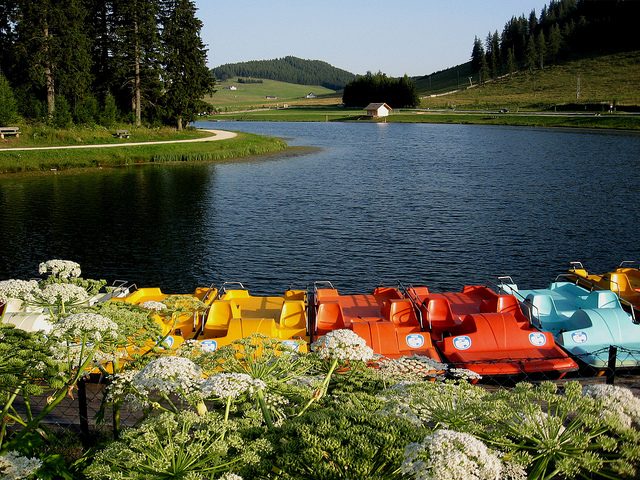The south side of the square is taken up by the “Rathaus” – the flamboyant historicist late 19th century palace of the Graz’ City Hall. Just in front of it is the Erzherzog-Johann-Brunnen (Archduke Johann Fountain) which is surrounded by numerous adjacent fast food and retail stands that sell typical Austrian sausages, French fries, flowers and magazines as well as roasted chestnuts in the fall. The northeast side of the Hauptplatz features a view of Graz’ most famous landmark: the “Uhrturm” (Clock Tower), located on the Schlossberg hill that overlooks the city.

A medieval sign adorns a house in the Sackstrasse
I continued my walk northwards through this pedestrian zone along the historic Sackstrasse and walked into a truly historic restaurant: the “Krebsenkeller” (Crawfish Cellar) has been a restaurant here since 1538 and its inner courtyard was full of culinary fans. Across the street is the famous Hotel Erzherzog Johann which is also a restaurant since 1852. Just steps further north I walked into another historic building whose courtyard was adorned with a metal sculpture that surprisingly featured all sorts of American footballs.

The Schlossbergplatz
Metres away is the so-called Schlossbergplatz, a square framed by various bourgeois houses and historic restaurants that features stairs up to the Schlossberg. I then crossed the road and walked southwards alongside the Mur River to one of the newest landmarks of Graz: the “Murinsel” (Mur Island) was built in 2003 when Graz was the European Cultural Capital. The New York designer Vito Acconci created a design for an artificial island that connects the eastern and western banks of the Mur and is supposed to resemble a sea-shell. The interior of the island holds an amphitheatre, a restaurant and a playground for children.

The Murinsel
Now I needed to explore the city’s most prominent elevation: the Schlossberg (literally “Castle Hill”). I did that by taking the Schlossbergbahn funicular which is part of the Graz public transport system. The original steam-operated funicular was opened in November 1894 and was in operation until 1960. After an extensive renovation and rebuilding of the steep rails, the funicular started operating again in 1961 until it closed its doors in February of 2004.

View over the city from the funicular
The third generation of this funicular was initiated in early 2004 and cost about 2.5 million Euros. The new generation of vehicles is more spacious and features fully glass-enclosed roofs and windows which provide a great view of the city as you ascend up the mountain. It takes just over two minutes to go from the base station up 123 m in altitude to the upper station and at a cost of 1.70 Euro it is an affordable and interesting way of getting up to Graz’ famous hill.

The “Liesl” clock tower
At the top I stepped out onto the outdoor patio of a restaurant that offers a phenomenal view over Graz and the surrounding mountains. Steps away I saw the Glockenturm (“Bell Tower”), a historic building from 1588 which still houses a bell that weighs 4200 kg and is referred to as Liesl. The Schlossberg used to feature a medieval castle from the 1500s (therefore the name “Castle Hill”) that was ordered to be destroyed by Napoleon in 1809. Only the Bell Tower and Graz’ famous landmark, the Uhrturm, were allowed to remain of the fortress. The local residents had paid a considerable ransom to the French troops to hold on to their beloved landmarks.

The “Türkenbrunnen”
Walking southwards of the Glockenturm I arrived at the Stallbastei (“Stable Bastion”), a fortification that features 20 metre high and 6 metre thick walls whose construction began in 1544. Today there are various cannons that adorn the bastion and at the open front of the building there is a beautiful view overlooking the city. Just below the bastion is the “Türkenbrunnen” (Turkish Well), a 94 metre deep well that taps into the groundwater level of the Mur River. Its intention was to provide water, even during extended periods of besiegement.

Graz’ symbol: the “Uhrturm”
The Uhrturm itself, known far and wide as the symbol of Graz, is one of the oldest buildings of the city. The core of the tower is assumed to date back to the 13th century and was already mentioned in historic records in 1265. Its present appearance dates from 1560. Four large clock faces adorn the four sides of the tower, and the interesting thing to note is that the hour hand is smaller than the minute hand.

View over the red rooftops of Graz, with the Kunsthaus in the background
